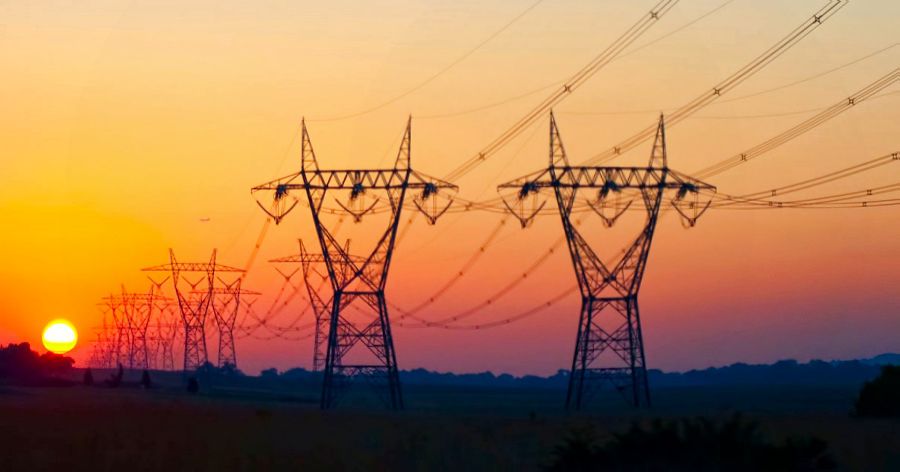WHY ARE ELECTRICITY PRICES SOAR ? |
|
Taxes and transport costs, as well as the financing of the energy transition, explain in particular why liberalization has not, as expected, led to a drop in prices. Between 2007, a symbolic date in France since it marks the eligibility of all consumers for market tariffs, and 2020, the average price per megawatt-hour (MWh) of electricity for households rose from 124 euros at 181 euros, or 57 euros per MWh of increase. At first glance, the finding is therefore clear: with nearly a 50% increase since 2007, the opening up to competition does not seem to have fulfilled its objective of lowering prices for consumers. The two finalists of the last presidential election, Emmanuel Macron and Marine Le Pen, moreover openly debated it during the intervening rounds and, if the proposed remedies differed, both agreed on the fact that the market energy system was inefficient and would, in its current form, contribute to price increases. This is also the conclusion of the central social and economic committee of Electricité de France (EDF), which has just launched a petition for the exit from the European electricity market and the return to a public energy service. For his part, the leader of the left, Jean-Luc Mélenchon, who aims to become Prime Minister after the legislative elections, calls for a return to a national energy market. But is this surge in prices really linked to the liberalization of the sector, which was precisely supposed to stimulate competition and therefore innovation, particularly in the deployment of renewable energies (EnR), and lower prices? In reality, the observation appears more nuanced. First of all, part of this increase is explained by taxes (particularly the CSPE) which weighed 25% on the consumer's bill in 2007 (i.e. 31 euros/MWh), and 34% in 2020 (i.e. 61 .5 euros/MWh). In other words, the increase in taxes alone explains 31.5 euros/MWh out of the 57 euros/MWh increase in average prices observed (ie 55.3% of the total). Prices would soar if France isolated itself Another part of the increase is based on the costs inherent in the transport networks, which had to be reassessed on several occasions to take into account the necessary investments in the maintenance, but also the modernization of these essential infrastructures. This modernization seems all the more necessary as electricity production becomes decentralized (particularly with the deployment of renewable energies), and as new uses develop. These electricity transmission tariffs (Turpe) thus rose from 41 euros/MWh in 2007 to 53.5 euros/MWh in 2020, or 21.9% of the total increase observed. A quick calculation therefore allows us to deduce that supply costs, or in other words, market factors, explain on average only 22.8% (100%-55.3%-21.9%) of the price increase observed over the period, i.e. approximately 13 euros/MWh. For opponents of the European energy market, this residual 22.8% would therefore sound like an acknowledgment of failure and would justify a return to national markets. However, according to projections by RTE (manager of the national high-voltage electricity transmission network), an isolated France by 2050-2060 would cost taxpayers several billion more per year. Indeed, to reduce our CO2 emissions and our dependence on fossil fuels, we have already closed and planned the closure of the equivalent of nearly 10 gigawatts (GW) of thermal power plants. In addition, our aging nuclear power plants are experiencing prolonged shutdown and monitoring periods that prevent their full operation. All this makes France an importer of electricity, in particular to cover its consumption peaks. In 2021, RTE reminds us that France will have imported 44 terawatt-hours (TWH, one million MWh) of electricity (including 22.2 TWh from Germany and Benelux). This figure was “only” 27.5 TWh in 2007! This can only mean two things: France is finding it increasingly difficult to cover its domestic energy needs and/or it is sometimes profitable for it to import energy, especially when market prices are low.
In the midst of this market dynamic, EDF is the object of a curious paradox. It should be understood that the main player in the electricity production market in France remains bound to cede to its competitors a ceiling of 100 TWh/year of nuclear energy at an "Arenh" tariff (regulated access to historical nuclear energy ) fixed since 2012 at 42 euros/MWh. This provision, which commits about a quarter of EDF's nuclear production capacity, has enabled the establishment of competition on the supply market, electricity of nuclear origin being highly competitive, in particular to cover “basic” needs. It is also very much in demand at present due to soaring market prices. The Arenh, which has not been revised since 2012, is supposed to cover EDF's nuclear electricity production costs. However, this is no longer the case if we are to believe the Energy Regulatory Commission (CRE) and the incumbent operator, who respectively estimate these production costs at 48.36 euros/MWh and 53 euros/ MWh. In other words, EDF sells part of its nuclear production at a loss... which, from the point of view of the French taxpayer who participated in the constitution of the EDF fleet and is one of its shareholders, is akin to a double penalty since, at the same time, it is also being hit by rising prices. However, it should not be overlooked that EDF is both a leader in the supply of electricity, but also a very important exporter. And if it loses money on the 100 TWh conceded at the Arenh tariff, it gains some on the rest of its production, all the more so when market prices soar! Moreover, its cost price remains very competitive, due in particular to its nuclear and hydropower revenues. On the balance sheet, despite the paradox of the Arenh, this situation allows it to generate significant gains that benefit the state shareholder… and, in one way or another, the taxpayer. Are measures of the “energy shield” type, for example, not indirectly deducted from EDF's profits? The heavy financing of renewables Finally, it should be borne in mind that the opening up to competition met other objectives than simply lowering prices. It was also a question of reacting to a series of problems identified in the mid-1990s. At that time, the European Union had already anticipated a sharp increase in global demand for energy, and the subsequent tensions over access to fossil resources on which Europe remains highly dependent. European energy sovereignty cannot, in this context, do without a real unified energy policy that allows both to influence the markets, but also to plan the gradual exit from fossil fuels. The method of financing renewable energies (EnR) and their costs associated with their integration into the network thus partly explains the price increases. Indeed, private financing is carried out at a market rate generally between 4% and 7% when the State could benefit from much more advantageous financing conditions. In other words, the energy transition is more expensive – all other things being equal – when it involves private rather than public investment. Certainly, but that would be to forget a little too quickly that the European States, already burdened with very significant sovereign debt for some, have multiple budgetary arbitrations to carry out (subject to the constraints of complying, in normal times, with the Stability and Growth Pact) . However, they already directly and indirectly subsidize renewables a lot, through purchase obligations at a regulated price or additional remuneration for the exclusive benefit of renewables producers. Renewables also have the disadvantage of being intermittent, but above all decentralized and generated by multiple heterogeneous producers. This dispersion makes the network more difficult to control and balance and requires massive investments to adapt the lines to this new situation. For example, the Electricity Transmission Network (RTE), which transports electricity in France, plans some 33 billion euros in investments by 2035 (including 13 billion for the absorption of renewable energies alone), and an exponential increase beyond that depending on the share of renewables in the French energy mix. In return, these investments pave the way for more intelligent management of energy, and the development of the uses that go hand in hand, whether it is the massive electrification of vehicle fleets, "smart" electrical networks (smart grids) allowing production/injection of energy that can be adjusted in real time, remote control of demand… In short, an optimization that will ultimately lead to better energy efficiency. And to continue to reduce, by increasing the density of our renewable energy park, our CO2 emissions. The evolution of tariffs in the future will therefore partly reflect our political choices concerning the environment. We understand from reading this brief overview that, of course, we remain far from the promises of moderating price competition, but that all the price increases do not result from the imperfections of the liberalized market, and that the many benefits linked to the construction of the European energy market cannot be totally overlooked . However, the leeway to protect consumers' wallets and ensure the energy transition remains limited. Unless we bet on energy sobriety, see the emergence of radical innovations in energy generation, or hope for more favorable macro conditions, the rise in prices does not seem to be able to be stemmed in the short term. And this, even if it was decided to cap the marketing expenditure of suppliers, EDF and its rivals that have appeared since 2007... Julien Pillot , Teacher-Researcher in Economics (Inseec) / Associate Professor (U. Paris Saclay) / Associate Researcher (CNRS), INSEEC Grande École This article is republished from The Conversation under a Creative Commons license |
|
| Simon Freeman for DayNewsWorld | |
 |
|





